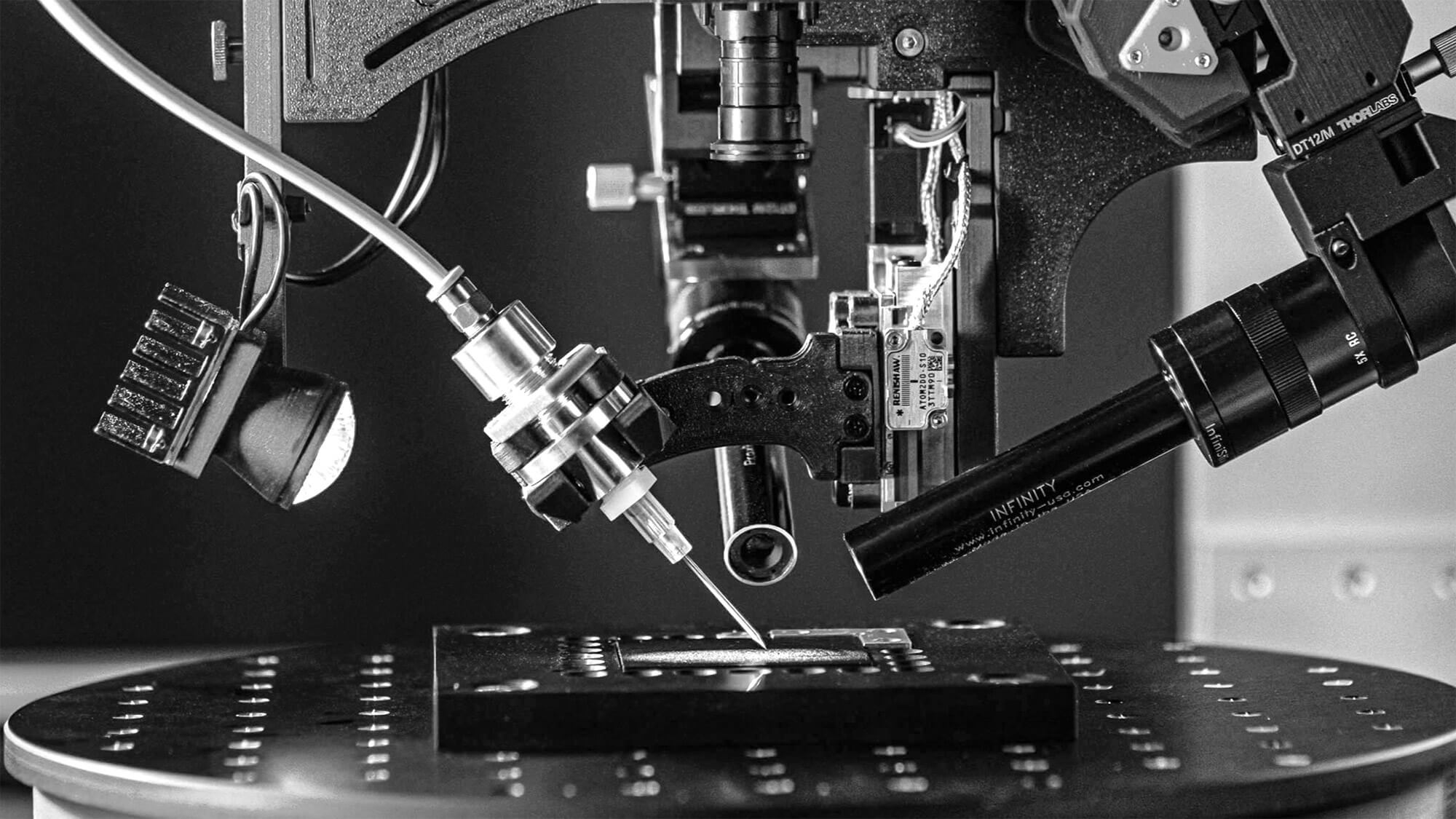XTPL technology showcased in the prestigious international scientific journal Nature Scientific Reports

XTPL S.A., a global supplier of breakthrough nanoprinting solutions for the global market of modern electronics, has presented the operating mechanism and the possible applications of its proprietary ultra-precise deposition (UPD) technology in the renowned international scientific journal Nature Scientific Reports. Prepared by the Company’s team, the article was released as an open-access publication, which will ensure an even wider promotion of the XTPL technology around the world.
The article titled “High-resolution deposition of conductive and insulating materials at micrometer scale on complex substrates” published in the journal was prepared by an interdisciplinary team of recognized experts, including: Mateusz Łysień, R&D Manager, Łukasz Witczak, Senior R&D Engineer, Aneta Wiatrowska, PhD, XTPL Technology Director, Karolina Fiączyk, PhD, R&D Manager, Jolanta Gadzalińska, Senior R&D Engineer, Ludovic Schneider, R&D Team Leader, Prof. Wiesław Stręk, PhD, DSc, professor at the Institute of Low Temperature and Structural Research of the Polish Academy of Sciences, Marcin Karpiński, R&D Manager, Łukasz Kosior, Business Development Manager, Filip Granek, PhD, CEO of XTPL, and Piotr Kowalczewski, PhD, R&D Manager.
Nature Scientific Reports is a peer-reviewed journal belonging to Nature Portfolio, a division of the international publisher Springer Nature, which publishes scientific journals and magazines on science and medicine.
“We are very pleased to be able to present our globally unique, patented UPD technology, with its capabilities and applications, in one of the most important scientific journals in the world. This is an excellent opportunity for XTPL to promote our technological solutions even more. In addition, this is another strong confirmation for industrial players that the XTPL technology is truly innovative and that it has been recognized by the scientific world and can find specific applications in the manufacture of next-generation electronics. As well as presenting our printing method and its globally competitive resolution, our article refers to materials compatible with the UPD technology and demonstrates its example application areas. I am truly proud of the whole interdisciplinary team that worked on this publication. At XTPL, we develop breakthrough technology and the bar we set for ourselves is the competitiveness of our solutions on a global scale. I encourage anyone interested to read the article, which is available in an open-access format,” says Filip Granek, CEO of XTPL S.A.
The article is available in English at: https://www.nature.com/articles/s41598-022-13352-5
XTPL develops and commercializes three complementary business lines based on its proprietary UPD technology, each of which can generate independent revenue streams: the Delta Printing System prototyping devices; conductive nanoinks, and the EPSILON printing heads intended for industrial implementation on the production lines of global manufacturers of next generation electronics. All the indicated technological solutions are based on the Company-developed technology of printing conductive structures. The technology responds to the three megatrends in the production of modern electronics. The industry is currently strongly focused on further miniaturization of the size and weight of electronic devices, modifying their forms and properties, and moving towards an increased flexibility and three-dimensionality. The recent global trend is also environmental protection by efficient use of limited resources while reducing the production waste, which is enabled by additive technology.
In 2020, the value of the rapidly growing printed electronics industry was USD 41.2 billion (+11.0% YoY). In 2025, it should stand at USD 63.3 billion, while in 2030 it is expected to reach even USD 74.1 billion (source: IDTechEx). This means that the market will grow at a CAGR of 9.0% in 2020–2025.
In Q1 2022, the Company posted total revenues of PLN 1,619 thousand. This includes PLN 930 thousand from the sale of products and services and PLN 689 thousand in grant revenue. In Q1 this year, commercial revenues alone reached 45% of the total sales reported in 2021. The Company’s EBITDA was PLN -2,406 thousand and was broadly similar year-on-year. It is noted that the progressing commercialization already has a marked positive impact on cash flows. After the first three months of 2022, net cash flows were PLN -889 thousand compared to PLN -1,877 thousand in the same period last year.

 Back to all articles
Back to all articles 


